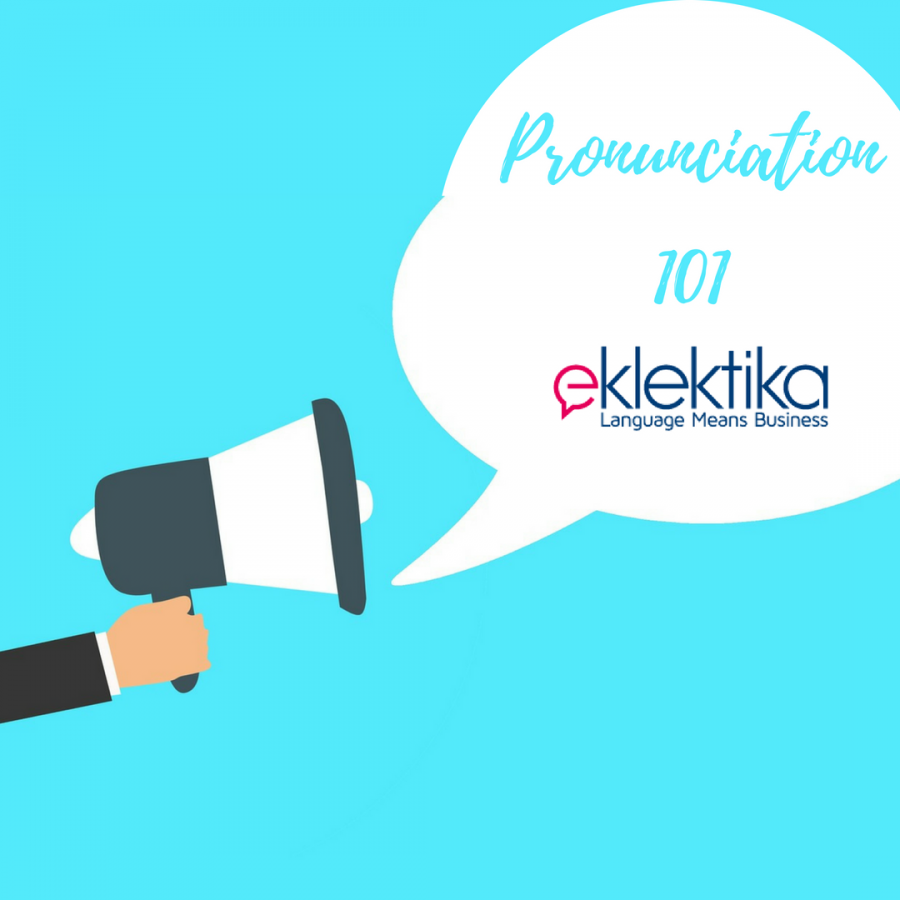
At Eklektika, we are constantly coming up with ideas on how to help our students get better and learn more and more. For this reason, we have decided to offer free webinars to all our current students!
The first webinar “Pronunciation 101” tackled some of the most challenging sounds in the English language for Polish speakers, as promised, we have written an article answering some of the questions that came up during the webinar as well as providing a summary of the information taught.
- What is the difference between the /s/ and /z/?
As mentioned in the webinar, these two sounds are almost exactly identical except for the vibration attributed to the /z/ sound, you can see it in the following pictures:


2. Are the sounds /s/ and /z/ only connected to their representative letter s and z?
The short answer is no. Due to the way the English language works, a lot of letters or letter combinations may sound as others, for example, the way in which the “ph” sounds like /f/ in the word Philadelphia, but also “gh” sounds /f/ in the word Cough and of course /f/ in words such as Life.
- The voiceless (unvoiced) /s/ sound can be found in English words such as said, sad, sit, box, bus, cats, face, and circle.
- The voiced /z/ sound can be found in English words such as zip, exist, buzz, boys, his, was, and is.
3. How do I know when it should sound /s/ or /z/?
- Say /Z / when the word ends in a vowel or other voiced sounds like m, n, ng, l, b, d, g, v, voiced th, or r sound.
- Say /S/ when the word ends in a voiceless sound like a p, t, k, f, or voiceless th sound.
4. Could we get some words to practice?
The best words to practice these sounds are words which are written in a very similar way but feature these 2 sounds, this way you can clearly make up the difference between them.
| /s/ | /z/ |
| Sip | Zip |
| Seal | Zeal |
| Loose | Lose |
| Race | Raise |
| Rice | Rise |
| Price | Prize |
| Piece | Peas |
| Lace | Lays |
| Niece | Knees |
| Use ( noun ) | Use ( verb) |
5. What are the rules for -ed pronunciation?
You may find these rules and example on how to make these sounds by reading our article Grammar bytes 1.0 – Simple Past where we detail the basic definition of this tense and all the grammar rules.
6. What are some of the most challenging sounds for Polish speakers and why?
Consonants can be voiced (with vocal folds vibrating) or voiceless (with no vocal fold vibration).
In Polish, at the end of words, voiced consonants become voiceless
kot = kod jesz = jeż
But this is not the case in English
coat =/= code buzz =/= bus
As a result, problems with consonant voicing are a major source of Polish accent in English
Some of the sounds we explored in the webinar were: /p/ vs /b/, /t/ vs /d/ and /k/ vs /g/.
7. What can we do to practice and improve the pronunciation of the afore mentioned sounds?
You can practice by using minimal pairs. Minimal pairs are pairs of words that are only different in one sound, they are used to emphasize the correct pronunciation of easily confused words.
You may use this table to start practicing!
/p/ vs /b/ | /t/ vs /d/ | /k/ vs /g/ | |||
Rope | Robe | Mate | Maid | Wick | Wig |
Cup | Cub | Feet | Feed | Lock | Log |
Cap | Cab | Heart | Hard | Buck | Bug |
Rip | Rib | Mat | Mad | Pick | Pig |
Lap | Lab | Eight | Aid | Stack | Stag |
Pup | Pub | Coat | Code | Dock | Dog |
If you have any more questions concerning the content of the workshop, do not hesitate to leave us a message in the comments below and we will get back to you as soon as possible!
